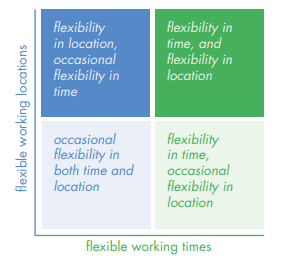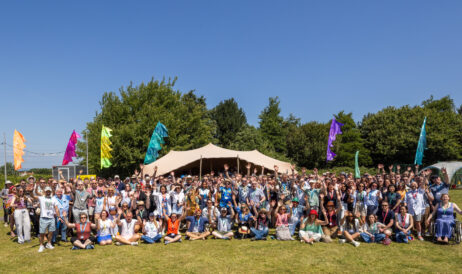Divisional Director for Organisational Change, Steve Dolphin, discusses some of the advantages and challenges of shifting to a hybrid working model and offers advice to any businesses and organisations who are thinking of making the switch.

Regardless of whether a global pandemic was a necessary trigger or whether it was an inevitability, a form of hybrid working is now here to stay for most businesses. But what do the changing work patterns mean for individuals, the teams in which we work, and for organisations as a whole – and how do you get there?
Understanding the landscape
When we first started responding to the events of March 2020, Stride Treglown set up three internal focus groups to look at Future Working practices, Future Office Space, and Future Travel expectations. The three groups worked independently but with some obvious overlaps. Importantly, the groups were made up of a mix of senior leaders, earlier career employees, and members of our Employee Forum.
The Future Working group set out a clear scope:
“To improve our existing, already-good flexible and agile working guidance in line with a more blended working pattern and develop best practice examples.”
Over the course of a year, the group met regularly to discuss agile working covering topics like core hours, company policies and guidance notes.
What does hybrid working mean to us?
Like some other leaders in Architecture, Engineering and Construction, we settled on the idea that hybrid working is best described as flexibility of location and time. We thought about where the individual might sit on a scale of least-to-most able to work anywhere, and least-to-most able to work any time.
For example, a live news reporter might be fixed on time, but could perhaps report from anywhere; a school crossing attendant wouldn’t be very effective if they weren’t in the right place at the right time; and someone who records a podcast might find they could do that at any time as long as they were in their recording studio.
We took time to think about – and listen to – individuals across the practice. We recognise that people in their early careers might want more support within an office space; parents and carers might need to make school runs and certain events; team leaders might choose to work independently on some days but then be in the office when most team members are in.

What changes have we made?
Notably, we have reduced our core hours to 10am-3pm. This gives employees more flexibility, while still balancing team and organisational needs by giving a suitable window when most people will be available.
Our conversations with the Future Working group also led to the creation of some new policies.
Our Hybrid Working Policy now acts as a ‘best practice guide’ and describes what steps people should follow to make any arrangement work for everyone.
Alongside this, our new Working Hours Policy helps people to understand the expectations around core working hours and explains what flexibility exists such as Flexi Time and Flexi Day arrangements.
To help with issues of burnout and blurred work/home lives, this policy also sets out clear advice on how to handle busy peaks in workload and how to best balance those challenging times when they do occur. In addition, we held training sessions which gave tips on how to minimise distractions and use simple technological features like a timed do-not-disturb mode to help protect individuals’ non-working time.
Our Hybrid, Agile, and Flexible Guidance
The new policies detail the formal rules and expectations. However, our experience shows that a more useful way of explaining options to our employees is via worked examples. Our Hybrid, Agile and Flexible Guidance notes now include specific examples of how individuals might use different working patterns to achieve the best balance for them.
Our advice to you if you’re making the shift to hybrid working
- Set up working/focus groups and define a clear scope. It’s helpful to agree the remit and the expected outcomes early on.
- Be clear about activities that you think work better together or separately; as a creative practice there are some aspects of collaboration and design that work much better when people can get in the same room together; conversely writing up a report may require quiet spaces and to be alone.
- Frame considerations in three ways: how they apply to an individual, a team, and the wider organisation.
- Take time to ask people what their fears or challenges might be. In the early days, many of our employees felt they lacked choice and that caused a lot of stress; other issues might be associated with visibility, communication, or technical problems.
- Consider where additional training or coaching might be required. For instance, are team leaders equipped to manage a hybrid team?
- Aim to set clear expectations. If you have an idea of how often you want people to come together, tell them.
- Create positive environments. If you feel it’s important for people to be in the office, make sure spaces are enjoyable and employees have good reasons to want to come to them. For us, we found that lots of employees missed the socialisation aspects of coming together.
How is your business dealing with some of the challenges associated with hybrid working? Get in touch with Steve if you’d like to find out more about our journey or download our Hybrid, Agile and Flexible Guidance.






